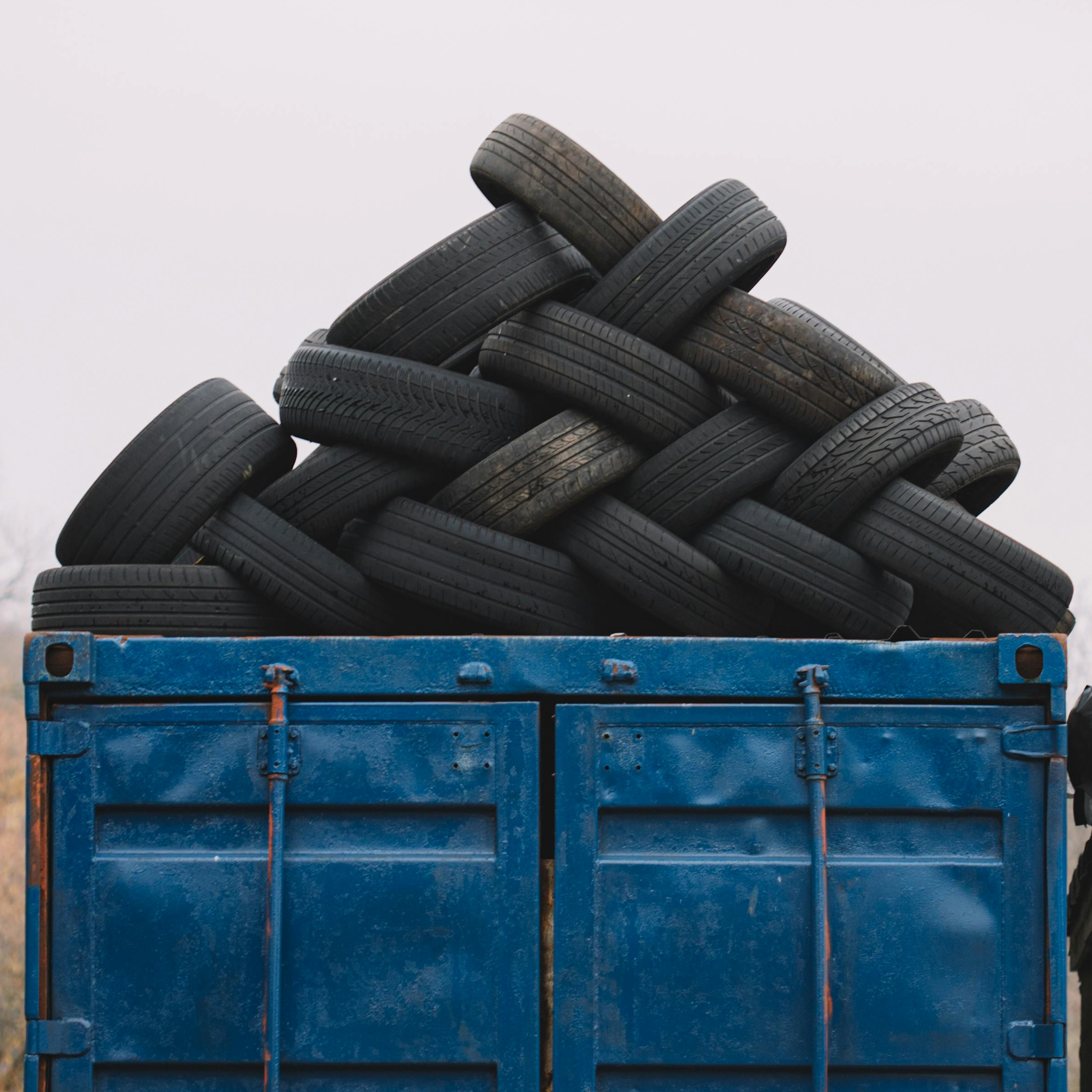Tires are essentially made of rubber, steel, and textile fibers and are not considered hazardous waste in themselves (although they are classified as “special waste”). However, if burned, they release carcinogenic substances and highly polluting toxic gases into the atmosphere, harmful to both humans and the environment. Moreover, when left outdoors, they collect rainwater, which promotes the proliferation of mosquitoes and other insects.
TIRE RECYCLING INTO RUBBER CRUMBS AND LCA

The beginning of a new era
In the interest of a responsible and sustainable management of the used tire disposal process, a law has been in place since 2011 that punishes those who dispose of, burn, or abandon tire carcasses in nature. The same law requires tire manufacturers and importers to dispose of the same number of new tires placed on the market the previous year annually; workshops and tire dealers are also required to collect used tires free of charge and deliver them to authorized collection centers. Once all the tires reach the authorized centers, they are divided into reusable and end-of-life tires. The former can be retreaded with a new tread or, if the rubber wear has not exceeded 14%, can be reintroduced to the market as used. All tires that cannot be “reconstructed” or reused end up in the industrial production process in the form of granulate or rubber powder. In the last two decades, interest in developing the life cycle assessment (LCA) of tires has grown exponentially, mainly aimed at using these “wastes” to produce asphalt, although traditionally road construction have been carried out with virgin materials. Crumb rubber, thus becomes a fundamental means in the disposal and use of these waste materials, which have so far been among the major environmental concerns, as every year more than a billion waste tires worldwide are not properly disposed of.
toward complete re-use of residues
Waste tire recycling plants recover all the valuable materials that make up the tires, including natural and synthetic rubber, carbon black, hydrocarbon oils, and sulfur compounds, subjecting them to a devulcanization process to regenerate the granular rubber and then reuse it as virgin material. The application of this granular rubber in asphalt is known as asphalt rubber (AR), but it can also be used in concrete production. In conclusion, although the LCA of crumb rubber production is based on primary data collected from the recycling plant, technologies and machinery may vary depending on the plant itself. The use of this “new” material could significantly reduce the environmental impact that waste tires currently have on our health and our planet.
